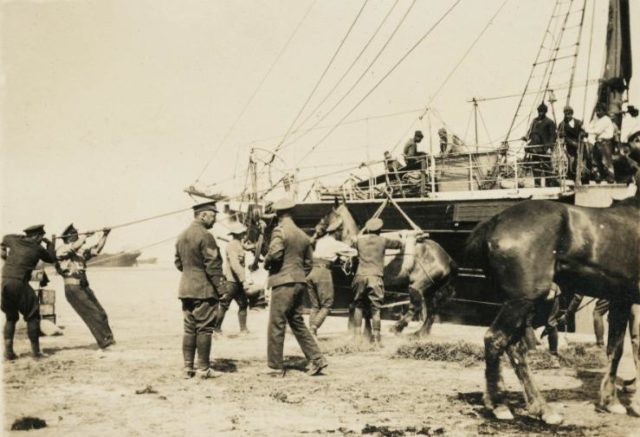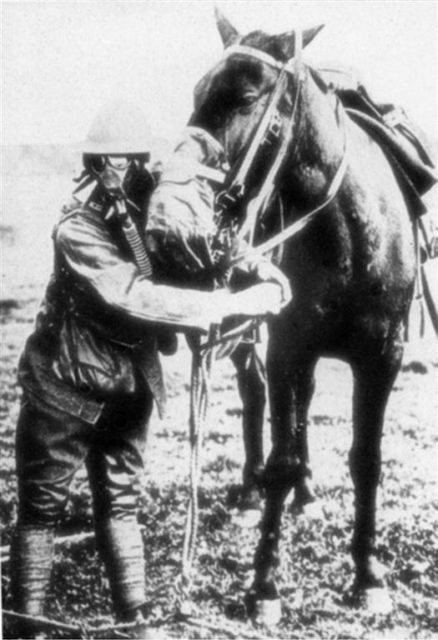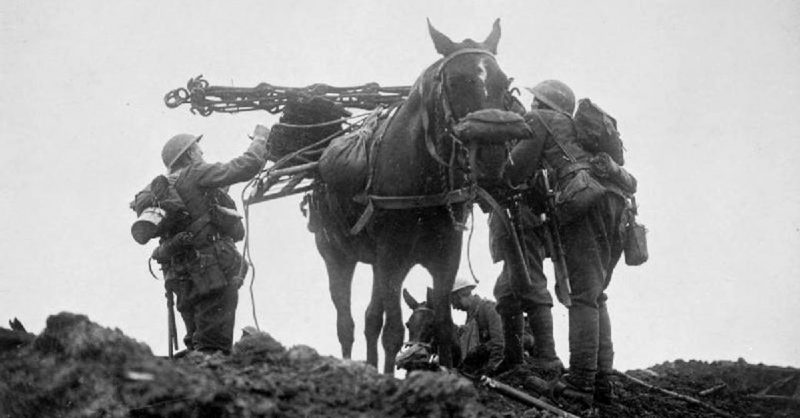100 years ago on April 6th, the US Congress voted to go to war with Germany and thereby entered World War I. 17 million people died in WWI. Less publicized is the role animals played in the war effort.
Horses were popular on both sides of the front. Several million horses died in WWI. They were so important to the war effort on both sides, they became military targets.
Christopher Kolakowski is the director of the MacArthur Memorial in Norfolk, Virginia. He says that the horses were needed for movement. Taking care of the horses was like maintaining your car today.
Horses and mules were shipped to Europe from Newport News, Virginia, by the hundreds of thousands. It was the largest departure point for horses and mules during the war. Today the area is full of condos, offices and some shipyards.
Kolakowski says that Newport News was ideally located near the harbor and rail lines. Also, the harbor is very large and not as crowded as New York.
The US sold animals to the UK and other allies in Europe even before WWI. The US economy was in need of money, so there was no shortage of companies willing to meet the large supply of animals requested by our allies.

During WWI, animals tended to be the best option for transporting people and supplies, according to Lynn Rainville, a research professor of humanities at Sweet Briar College who wrote a book about the role Virginia played in WWI. Four-legged animals were able to maneuver over rough roads better than tanks, cars and trucks.
So valuable were horses and mules to the Allies that the Germans plotted to infect them as they waited at Newport News to be shipped to Europe.
Anton Dilger, an American-born German sympathizer who had studied science and medicine in Germany, developed a plot to infect the mules with anthrax and a disease called glanders.
The two diseases are so dangerous that, had the mules been infected, most or all of them would have been dead before they reached Europe.
It seems odd that Dilger would be willing to do such a thing, especially considering his father was Hubert Dilger, a German immigrant who received the Medal of Honor for his heroic actions in the Civil War.
Kolakowski calls it an “interesting dichotomy in the family” that the father would have a distinguished career in the US military and his son would support our enemy in WWI.
Robert Koenig wrote about Dilger in his book, “The Fourth Horseman: One Man’s to Mission to Wage the Great War in America.” Koenig believes that dock workers that Dilger paid to release the diseases failed to follow through.
Dilger’s plot was just one way the Germans attempted to interrupt the delivery of horses and mules from America. They also used a submarine to try and sink US transport ships full of horses.

According to Koenig, the Germans tried to blow up a train load of horses at one point. They also went to stockyards throughout the US, but it was not an effective tactic.
Disrupting the supply of horses would have been equivalent to blocking the delivery of dozens of tanks, nowadays. It would have ground the Allied operations to a halt.
Bill Barker is archiving the letters of Joe Harlin. Barker is the archivist at the Mariner’s Museum in Newport News. Harlin wrote a series of letters home to his parents from the war. He was stationed in Newport News.
In a letter dated August 15, 1918, Harlin told his parents that there were just as many sick horses as there always was.
The animals that were shipped to Europe were often malnourished by the time they arrived. They often died from malnourishment, exhaustion or the weapons fire of the enemy, KNKX reported.
Kolakowski says that people tend to think about the human toll of the war, but that animals also fought in the war.
